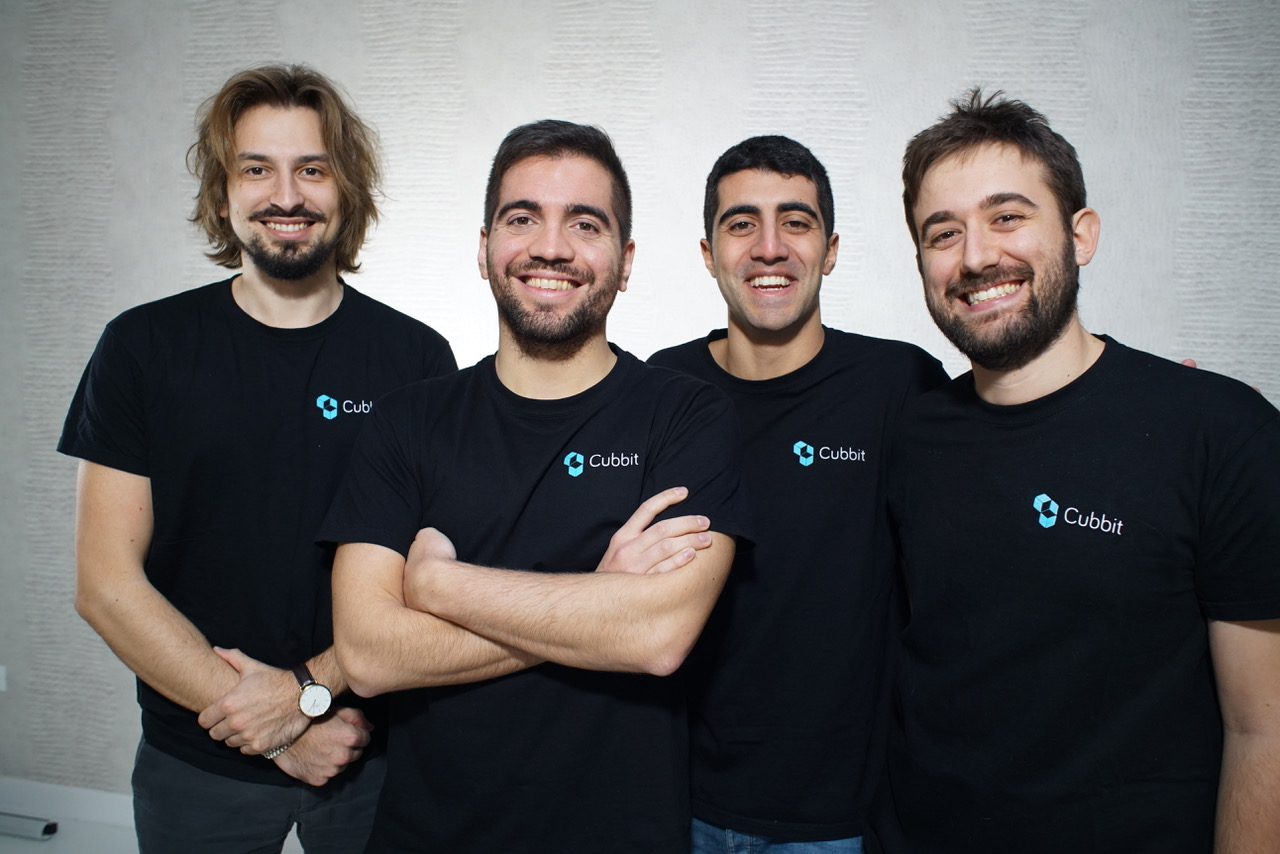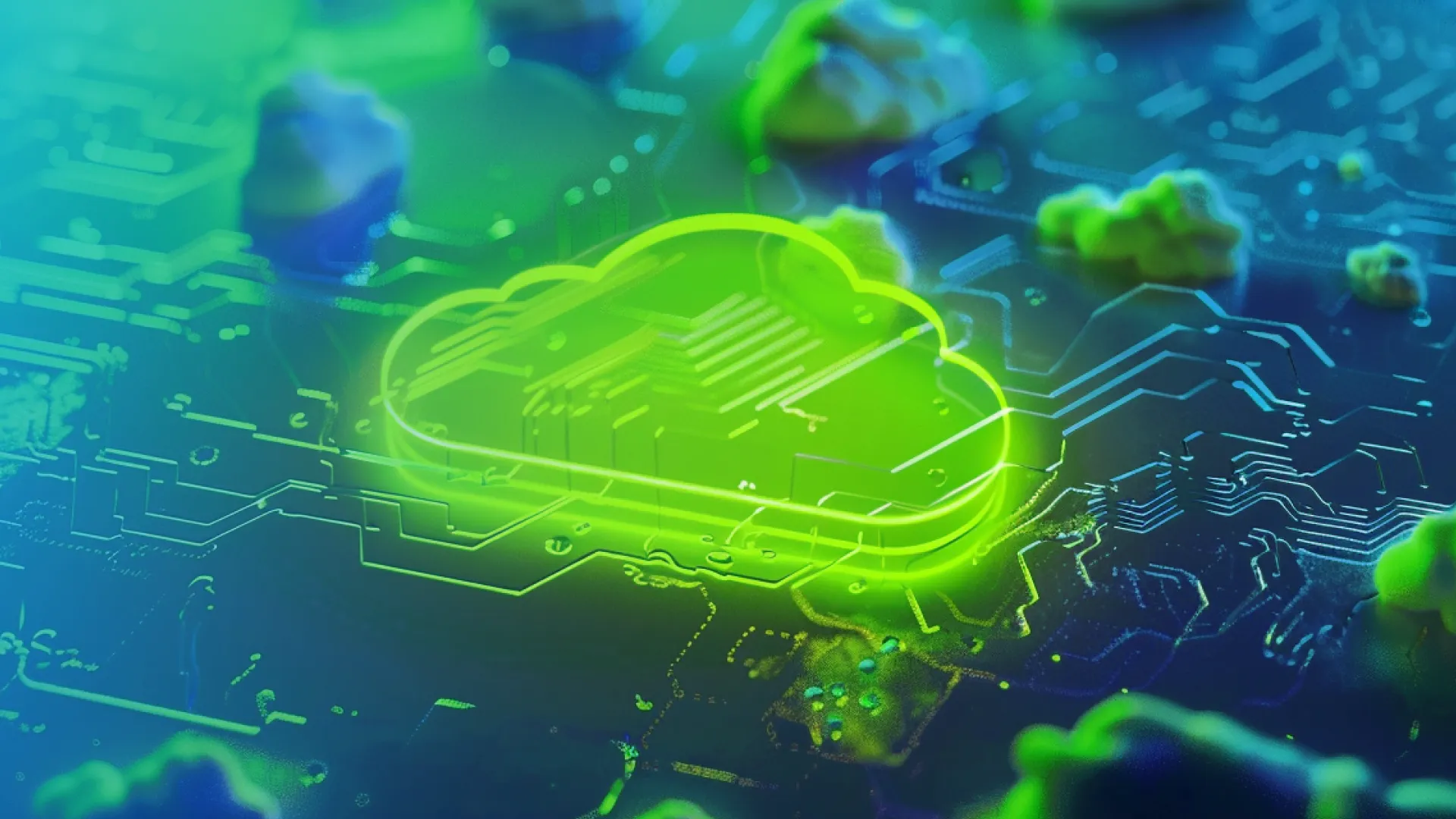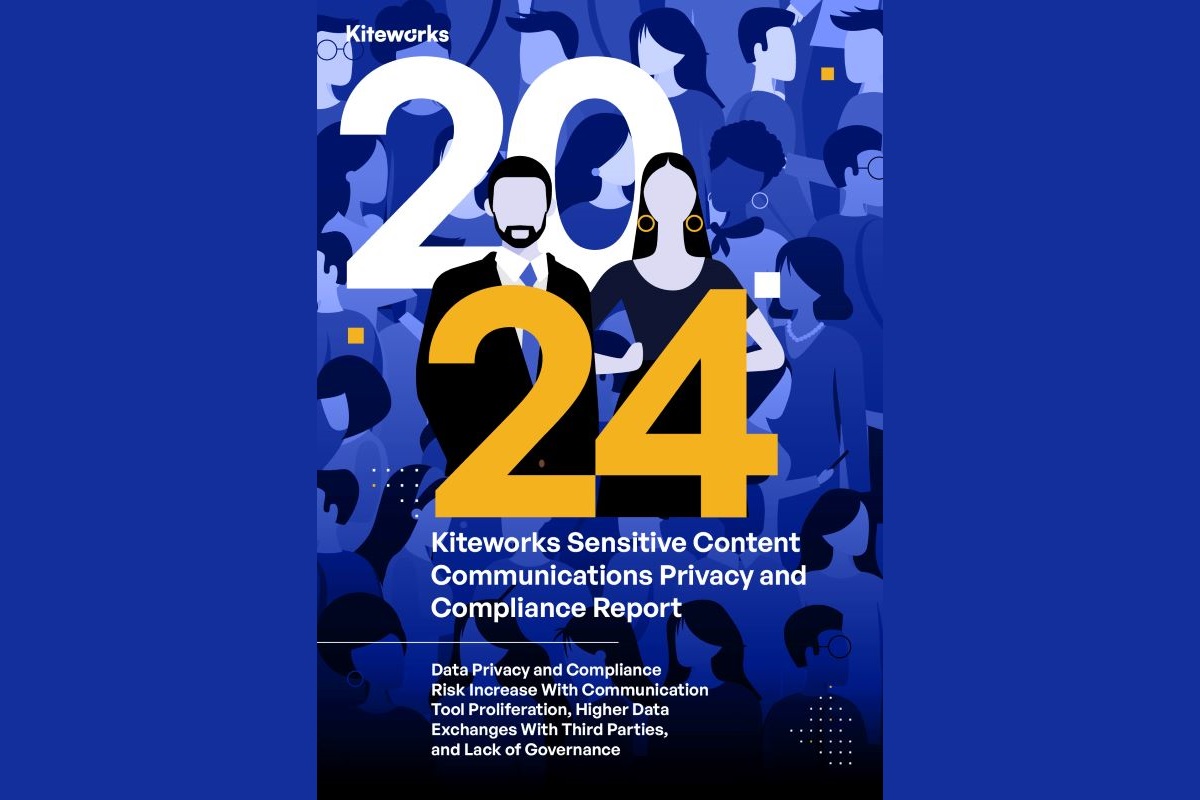Data
Data
Insights into Data Centre Investment & Market Growth
News
CTERA announces growth investment from PSG Equity
CTERA, a provider of hybrid cloud data management solutions, has raised $80 million (£61.4m) in primary and secondary funding from PSG Equity, a growth equity firm focused on software and technology-enabled services companies.
As part of the transaction, Ronen Nir, Managing Director at PSG, has joined CTERA’s board of directors alongside existing shareholders Benchmark, Bessemer Venture Partners, and Red Dot Capital Partners.
CTERA, named the top Leader and Outperformer in the GigaOm Distributed Cloud File Storage Radar for three consecutive years, combines an edge-accelerated global file system across public and private cloud environments with AI-based ransomware protection and data intelligence services. CTERA is at the core of hybrid cloud initiatives at some of the world’s largest banks, healthcare organisations, global media groups, and government agencies, in deployments that scale to tens of petabytes.
Unstructured data is a critical component of any enterprise storage strategy, representing about 80% of organisational data distributed across branch offices, endpoints, on-premises, and cloud data centres. Within this space, hybrid cloud file storage is one of the fastest-growing segments. According to Gartner, “By 2027, 60% of I&O leaders will implement hybrid cloud file deployments, up from 20% in early 2023.”.
The proliferation of AI technology helps make unstructured data management more crucial than ever before, as data access is needed not only for users and applications, but also for AI workflows. The new enterprise AI platforms depend on timely access to corporate data for training models and for augmented data retrieval to ensure relevance and accuracy.
“We believe CTERA is setting the standard for the modern hybrid data platform, with military-certified security and unparalleled performance,” says Liran Eshel, Founder and Chairman of the Board of CTERA. “The strategic partnership with PSG will enable us to further drive our expansion while delivering top service to our customers, and implement our vision for AI data services.”
“This investment is evidence of CTERA's robust business model and the opportunity it represents,” adds Ronen Nir, Managing Director, PSG. “We are excited to partner with CTERA as it embarks on capturing what we believe will be an inflection point in the hybrid cloud data market, leveraging both organic and inorganic opportunities to strengthen CTERA’s position and deliver even greater value to its customers.”
For more from CTERA, click here.
Simon Rowley - 17 July 2024
Artificial Intelligence in Data Centre Operations
Data
Data Centre Operations: Optimising Infrastructure for Performance and Reliability
News
Research reveals need for hybrid cloud storage strategies
Nasuni, an enterprise data platform for hybrid cloud environments, has unveiled the findings of its new industry research 2024 report, The Era of Hybrid Cloud Storage.
The research includes insights from over 1,000 IT purchasing decision-makers in the US, UK, and DACH (Germany, Austria, Switzerland) on hybrid cloud, digital transformation, security, and artificial intelligence (AI).
David Grant, President of Nasuni, comments, "As hybrid cloud storage takes centre stage, organisations need strategies to capitalise on their most valuable asset: data. In tandem, they need strategies for addressing critical IT issues including ransomware attacks and the introduction of AI integrations to the market. Legacy storage solutions cannot keep up with these demands. Nasuni’s The Era of Hybrid Cloud Storage report gives organisations the necessary industry and peer insights to understand and take action in a rapidly evolving cloud landscape.”
Key takeaways:
• Cloud strategies are at the forefront of enterprise success: Enterprises are rapidly moving forward with rolling out or planning cloud-first initiatives (according to 97% of respondents) to help grow their businesses, which includes significant investments in data management, analytics, AI, and cybersecurity.
• Hybrid cloud is business critical for proper data management: While only 19% of companies have a hybrid cloud storage model, a staggering 65% plan to implement one within the next year. Of those currently using a hybrid cloud solution, 70% plan to upgrade within the next 18 months.
• Data recovery and security is a primary driver for cloud solutions: Data recovery is the number one priority for firms when faced with a ransomware attack, with 59% of organisations seeing cloud initiatives delivering better data security and disaster recovery time.
• The growing role of data intelligence and AI: Organisations are targeting advanced data management and visibility through AI (60%). However, the biggest roadblocks preventing organisations from either developing or implementing AI solutions are data privacy and security (42%) and skills shortages (35%).
Nasuni enables global organisations to transform file data into an asset that can deliver critical business insights by consolidating that data in a secure and versatile enterprise hybrid cloud platform. Through its strategic partnerships and long-standing alliances with the major cloud providers, Microsoft Azure, AWS, and Google Cloud, the Nasuni File Data Platform is unlocking even greater efficiencies, reducing cost, and establishing a foundation for facilitating core enterprise AI use-cases.
Nasuni currently supports over 850 enterprise customers, including numerous Fortune 500, in more than 70 countries to scale, protect, and manage their data.
To download the full Era of Hybrid Cloud Storage report, click here.
For more from Nasuni, click here.
Simon Rowley - 17 July 2024
Data
News
Cubbit funding to enhance independent data storage offering
Cubbit, the first geo-distributed cloud storage enabler, today announced the closing of its $12.5 million (£9.6m) funding round. With this new funding, the company will enable European service providers and companies to take back full independence and control over their data, infrastructures, and costs.
More than 180 billion terabytes of data will be produced in 2025, and 75% of this will be created and processed at the edge. This explosive growth raises data orchestration complexity, cyber-attacks, sovereignty risks, and costs. AI and media creation are compounding this out-of-control growth, which is becoming an ever growing concern when it comes to geopolitical scenarios and the protection of sensitive data.
Cubbit eradicates these challenges by enabling organisations to create, in just minutes, their own geo-distributed S3 cloud storage that can slot into any infrastructure and policy framework – from hybrid cloud to the edge. With its DS3 Composer, Cubbit combines a proprietary data orchestration platform with its deep tech data fragmentation and geo-distribution technology. The result is a sovereign, hyper-resilient, flexible, and highly cost-efficient cloud storage service that protects European data. The company promotes its approach with the tagline, 'Your cloud. Your rules. Anywhere.'
Cubbit also guarantees the required data resiliency SLAs using 25/50% less disk space and IT resources compared to traditional cloud storage, therefore minimising the cloud carbon footprint.
The round was co-led by LocalGlobe, EMEA’s number one VC investor according to the 2023 Dealroom report, and ETF Partners, Europe’s original sustainability investor. Among the new investors joining Cubbit are also Verve Ventures, 2100 Ventures, Hydra (holding of Datalogic), Growth Engine, Eurenergia and Moonstone.
Azimut Libera Impresa SGR – Azimut Digitech Fund under the advisory of FNDX, CDP Venture Capital SGR through its Fondo Evoluzione, and Primo Ventures are returning investors. Individual investors include Fabio Fregi, former Italy Country Manager of Google Cloud, and Joe Zadeh, former VP Product at Airbnb.
The new funding will enable Cubbit’s to grow CAPEX free in Europe, initially focusing on the DACH, and French-speaking regions, as well as the UK. The round will also further accelerate Cubbit’s technology adoption, which is rapidly growing in Europe with more than 350 business customers, and is supported by several international partnerships, including HPE, Equinix and Exclusive Networks. Part of the funding will go towards further consolidation of the application ecosystem around Cubbit’s enabling technology to support vertical projects in various industries, including aerospace, defence, cybersecurity, healthcare and public administration.
Stefano Onofri, Co-CEO and Co-Founder of Cubbit, says, “Having top-tier international VCs invest in Cubbit's geo-distributed technology is a major endorsement. Over the past few years, we have grown massively and closed key partnerships and agreements with international players such as Leonardo, HPE, and Equinix - now it's time to take our expansion to the next level.”
Alessandro Cillario, Co-CEO and Co-Founder of Cubbit, notes, “Enterprises worldwide are facing the daunting challenge of orchestrating massive amounts of data; or they will soon. They don’t need just another cloud provider; they require a cloud enabler that allows them to implement the custom IT infrastructure strategy that they are looking for. Organisations need to keep full control over their data in order to simplify their workflows and reduce costs. Cubbit is here to help them achieve what was not possible before.”
Patrick Sheehan, Managing Partner and Founder of ETF Partners, adds, “We're witnessing a double-edged sword in the tech revolution: cloud storage is powering unprecedented innovation, but at a steep environmental cost. As data centres use more and more energy, their carbon footprint continues to skyrocket. Cubbit's Composer technology responds to this immediate challenge. It is a game-changer that reduces cloud storage emissions without slowing progress. It's not just an incremental improvement; it's a leap towards sustainable digital infrastructure. We have been very impressed by the vision of the Cubbit team and what they have already achieved, and are keen to help them continue to make a profound impact”.
Ferdinando Sigona, Partner of LocalGlobe, concludes, “Data generation is already one of today’s steepest exponential curves, and the generative AI wave is only poised to accelerate this further. As a result, companies of all types and sizes are facing escalating complexity and cost. At the same time, the geopolitical environment is driving investment into AI sovereignty, and we actually think that need for control will extend down the stack, all the way to data storage. Cubbit’s cloud storage software elegantly addresses all of these needs, and we’re excited to back Stefano, Alessandro and the whole team as they respond to the intense pull they’re experiencing from the market.”
For more from Cubbit, click here.
Simon Rowley - 16 July 2024
Data
Insights into Data Centre Investment & Market Growth
News
Nasuni announces strategic growth investment
Nasuni, a leading enterprise data platform for modern hybrid cloud environments, has announced a strategic growth investment led by Vista Equity Partners, a global investment firm focused exclusively on enterprise software, data, and technology-enabled businesses. Vista will be joined by TCV and KKR in the new investment, which values Nasuni at approximately $1.2 billion (£940m).
The investment will build on Nasuni’s strong momentum disrupting the legacy storage industry to further accelerate product innovation and commercial expansion in the global hybrid cloud market. Further terms of the transaction were not disclosed.
“At Nasuni, we care first and foremost about the success of our customers, partners, and employees,” says Paul Flanagan, CEO of Nasuni. “We are maniacal about our commitment to delivering quality in every aspect of our business and interaction with our customers. This investment and our strategic partnership with Vista, TCV, and KKR will allow us to build upon that commitment, scale with purpose and continue to innovate as we look to take Nasuni to the next level.”
Nasuni’s success to-date includes award winning technology, top decile customer retention rates, industry leading NPS scores, and a consistent 30% growth rate in a market that is rapidly expanding with the advent of hybrid cloud and AI. Nasuni’s data platform is used by over 850 companies spanning 70 countries, and is in use by some of the largest enterprises in the manufacturing, consumer goods, and energy industries.
“Nasuni’s platform offers a highly differentiated approach to consolidating, protecting, and managing data at scale with performance that is critical to supporting AI applications and other high-volume data use-cases,” adds Martin Taylor, Co-Head of Vista's Foundation Fund and Senior Managing Director. “We are thrilled to partner with the Nasuni team as they work to help businesses optimise their expanding and complex data needs with solutions that are fast, secure and highly cost-effective.”
BofA Securities served as the exclusive financial advisor and Goodwin Proctor LLP served as legal advisor to Nasuni. Kirkland & Ellis LLP served as legal counsel to Vista and TCV. KKR is making the investment through its Next Generation Technology III Fund.
For more from Nasuni, click here.
Simon Rowley - 10 July 2024
Data
Data Centre Operations: Optimising Infrastructure for Performance and Reliability
Enterprise Network Infrastructure: Design, Performance & Security
News
News in Cloud Computing & Data Storage
VAST Data Platform certified for NVIDIA cloud partners
VAST Data, the AI data platform company, today announced that the VAST Data Platform has been certified as a high-performance storage solution for NVIDIA Partner Network cloud partners.
VAST Data says that this certification underscores its position as a leading data platform provider for AI cloud infrastructure, and that it further strengthens the company's collaboration with NVIDIA in building out next-generation AI factories.
VAST provides a unified set of storage and data services that empower cloud service providers (CSPs) to offer a comprehensive catalogue of data-centric offerings that are deeply integrated with NVIDIA technologies. Uniquely designed to meet the stringent requirements of large-scale AI cloud infrastructure, the VAST Data Platform supports training and fine-tuning AI models of all sizes and modes, ranging from multimodal and small language models with less than 10 billion parameters to the world’s largest models consisting of over one trillion parameters.
“This certification with NVIDIA builds on VAST’s already tremendous success with CSPs as the de facto AI data platform solution for large-scale, cloud infrastructure,” says John Mao, Vice President, Technology Alliances at VAST Data. “With the VAST Data Platform independently validated and certified through the NVIDIA Partner Network, organisations can more confidently and securely deploy their AI models at unprecedented scale across thousands of GPUs.”
With seamless scalability and industry-leading uptime, the VAST Data Platform enables service providers with capabilities that span the complete AI pipeline - from multi-protocol data ingest, accelerated data pre-processing for feature engineering, and high-performance storage for model training with fast checkpoints and restores to edge data management for model serving and end-to-end cataloguing to meet audit and compliance requirements.
The VAST Data Platform offers CSPs:
● Service provider-grade reliability: the VAST Data Platform helps observed production systems achieve 99.9999% availability● Secure multi-tenancy: with a zero-trust framework, per tenant data encryption, flexible network segmentation, and robust audit capabilities, VAST enables CSPs to deliver secure cloud services at scale● Fine-grained workload isolation: with granular quality-of-service policies that prevent multi-tenant I/O contention, the VAST Data Platform helps CSPs ensure numerous customers have the performance and data access they need for AI workloads from a single cluster● Infrastructure cost savings: service providers and enterprises alike can consolidate storage silos with an affordable single all-flash solution and eliminate the overhead of data copies and sprawl● Improved operational efficiency: VAST offers robust APIs and SDKs, and all day two operations (such as upgrades) can be performed online, leading to a better customer experience with fewer admins required.
The VAST Data Platform serves as the comprehensive software infrastructure required to capture, catalogue, refine, enrich, and preserve data through real-time deep data analysis and learning. This comprehensive approach empowers AI clouds to offer a diverse range of data services to their customers, further enhancing their AI capabilities.
For more from VAST Data, click here.
Simon Rowley - 10 July 2024
Data
Data Centre Security: Protecting Infrastructure from Physical and Cyber Threats
News
Security Risk Management for Data Centre Infrastructure
Organisations struggling to control sensitive content, study finds
Kiteworks, which delivers data privacy and compliance for sensitive content communications through its Private Content Network, has unveiled its 2024 Sensitive Content Communications Privacy and Compliance Report, offering critical insights into the current state of sensitive content communications.
The report, based on a comprehensive survey of 572 IT, security, risk management, and compliance leaders, reveals significant vulnerabilities and challenges faced by organisations in managing and securing their sensitive information.
Among the key findings, the report highlights significant global challenges in managing sensitive content communications. When data is sent or shared externally, 57% of global respondents said they cannot track, control, and report on these activities. Not surprisingly, compliance reporting is a major challenge, with 34% of respondents generating audit log reports over eight times per month to satisfy internal and external compliance requests. This frequent reporting requirement reflects the ongoing struggle to meet stringent regulatory demands.
Tim Freestone, Chief Strategy and Marketing Officer at Kiteworks, emphasises the urgency of addressing these vulnerabilities: “Our report uncovers significant gaps that organisations must address to protect their sensitive content and comply with increasingly stringent regulations. The insights provided are a call to action for businesses to re-evaluate their content communication strategies and invest in robust security solutions.”
Proliferation of content communication tools leads to risks
The 2024 Kiteworks report highlights significant shifts and ongoing challenges in the use of content communication tools. Nearly one-third of respondents said their organisations rely on six or more content communication tools. In addition to ratcheting up risks, managing this tool soup decreases operational efficiency and makes it difficult to generate consolidated audit logs.
Preventing leaks of intellectual property (IP) and sensitive secrets is a top priority for 56% of respondents, underscoring the critical importance of protecting valuable information assets. In contrast, fewer organisations prioritise the impact on brand reputation (15%) and cost savings (26%). This shift indicates a growing focus on the direct risks associated with data breaches and information leakage.
Particular sectors express heightened concerns over IP leakage. In the legal sector, for example, 75% of respondents cite this as a significant risk, reflecting the industry's reliance on confidential information. Similarly, the oil and gas sector, with its proprietary technologies and sensitive data, shows considerable concern over IP leakage. These findings highlight the need for sector-specific strategies to address unique vulnerabilities and reinforce the importance of robust content communication practices across all industries.
Impact of data breaches
External malicious hacks of sensitive content communications remain a serious risk globally. 32% of organisations reported experiencing seven or more sensitive content communications breaches last year. This is a slight improvement from 2023, where 36% of organisations reported such breaches. However, 9% of respondents globally admitted they do not know if their sensitive content was breached, indicating a significant gap in advanced security detection and incident response capabilities.
The federal government sector reported the highest incidence of breaches, with 17% indicating they had 10 or more breaches and another 10% reporting seven to nine breaches. Alarmingly, 42% of security and defence organisations admitted to having seven or more breaches, highlighting the critical need for enhanced security measures in these sectors.
Geographically, APAC had the highest percentage of organisations reporting seven or more breaches, at 43%. This high number is concerning given the extensive third-party exchanges in the region. The legal costs associated with data breaches remain high, with 8% of organisations incurring over $7 million (£5.4m) in legal fees last year, and 26% reporting costs exceeding $5 million (£3.9m). Larger organisations, especially those with over 30,000 employees, faced even higher costs, with 24% reporting legal fees over $7 million.
Higher education emerged as the most affected industry, with 49% of respondents indicating they paid over $5 million in legal fees last year. Geographically, the Americas topped the list, with 27% of organisations reporting legal costs over $5 million, while 12% of EMEA respondents were unsure of the financial impact.
Organisations struggle to manage third-party risk
Managing third-party risk continues to be a significant challenge for organisations worldwide. The report reveals that 66% of organisations exchange sensitive content with 1,000 or more third parties, although this is a decrease from 84% in 2023. This reduction suggests that organisations are increasingly recognising the risks associated with extensive third-party interactions and are implementing measures to control access more effectively.
The APAC region has the highest volume of third-party connections, with 77% of organisations exchanging sensitive content with 1,000 or more third parties. Within the professional services sector, 51% of organisations exchange sensitive content with 2,500 or more third parties, significantly higher than the next highest industry, higher education, at 47%.
A concerning 39% of organisations globally are unable to track and control access to sensitive content once it leaves their domain. Surprisingly, compared to IT and risk and management professionals, cybersecurity professionals cited greater confidence in their organisations’ ability to track and control access to content once it leaves their domains (48% said they track and control three-quarters or more). This issue is particularly pronounced in the EMEA region, where 43% of organisations admit to losing the ability to track and control access to more than half of their sensitive content once it is shared externally. Local government organisations face the greatest challenge, with 54% unable to track and control sensitive content after it leaves their organisation, followed by pharmaceutical and life sciences companies at 50%.
Sensitive content communications security needs improvement
The report underscores the pressing need for improvements in managing sensitive content security. Only 11% of organisations believe no improvement is needed, a significant drop from 26% in 2023. This indicates a growing awareness of security risks and the necessity for enhanced security measures. The need for significant improvements is especially pronounced in the professional services sector, with 47% of firms acknowledging this need, and in large organisations where over half of respondents from companies with 20,001 to 30,000 employees reported a need for significant improvement.
When it comes to using advanced security technology for internal sensitive content communications, only 59% of respondents indicate they do so all the time. The EMEA region lags, with only 53% consistently using advanced security measures, compared to 67% in the Americas and 57% in APAC. State governments are leading in this area, with 71% reporting consistent use of advanced security technologies, followed by higher education institutions at 65%.
Organisations are also prioritising security certifications and validation, with ISO 27001, 27017, and 27018 topping the list as the most critical certifications. These were followed by NIST 800-171/CMMC 2.0. Notably, 59% of EMEA organisations prioritise ISO certifications, higher than other regions. In contrast, IRAP was more frequently selected by APAC organisations. The findings reflect a strong regional focus on different security standards based on local regulatory environments.
File size limitations pose additional challenges, particularly in the energy and utilities sectors. About 34% of respondents implement over 50 workarounds monthly due to email file size restrictions. For managed file transfers and SFTP, 27% and 31% respectively face similar limitations. Energy and utility firms are significantly affected, with 29% encountering email file size issues 50 times or more monthly, and 36% facing managed file transfer limitations.
Compliance challenges persist for sensitive communications
This year, 56% of organisations indicated that they require some improvement in compliance management, a significant increase from 32% in 2023. This growing concern reflects the increasing complexity and stringency of regulatory requirements.
Key compliance concerns for organisations include GDPR and US state privacy laws, with 41% of respondents citing each as their primary compliance focus. This aligns with regional priorities, as a higher percentage of EMEA organisations emphasise GDPR compliance, while US organisations focus more on state privacy laws. Risk and compliance leaders pinpointed GDPR as their biggest compliance area (52%). IT leaders, in contrast, listed US State data privacy laws as their top priority (52%).
The frequency and burden of generating audit log reports remain substantial. About 34% of organisations report that they must generate audit logs more than eight times per month to satisfy internal and external compliance requests. This task consumes significant resources, with 31% of respondents spending over 2,000 staff hours annually compiling these reports. Larger organisations face an even greater burden, with 32% of those with over 30,000 employees spending more than 2,500 hours annually on compliance reporting.
Notable compliance gaps persist across various industries. For example, only 38% of security and defence contractors prioritise CMMC compliance, which poses a significant risk given the impending enforcement of CMMC 2.0. Failure to comply with these standards could result in the loss of Department of Defense contracts. These gaps highlight the critical need for organisations to prioritise and invest in robust compliance strategies to address evolving regulatory demands and mitigate associated risks.
Organisations struggle to classify data and assess risk
Organisations continue to face challenges in effectively classifying data and assessing associated risks. More than half (51%) of organisations report that less than 50% of their unstructured data is tagged and classified. This lack of comprehensive data classification poses significant risks as unstructured data often contains sensitive information that needs protection.
Additionally, 40% of organisations indicate that 60% or more of their unstructured data requires tagging and classification. This highlights the growing recognition of the importance of data management practices in mitigating security and compliance risks.
Sector-specific risks are also prominent. For instance, energy and utilities firms are particularly concerned about the integration of generative AI (GenAI) technologies, with 50% citing this as a significant risk. Higher education institutions focus on protecting personally identifiable information (PII), with 50% highlighting this concern. In the healthcare sector, 58% of organisations prioritise the protection of protected health information (PHI).
When it comes to data types that are the biggest risk, IT as well as risk and compliance leaders ranked financial documents (56% and 61% respectively) at the top of their lists. Cybersecurity leaders, in contrast, listed IP at the top of their risk priorities (51%) followed by financial documents (46%).
These findings underscore the critical need for organisations to enhance their data classification efforts and adopt tailored risk management strategies to address the unique challenges of their respective industries.
Actionable Kiteworks report outcomes
The 2024 Kiteworks report highlights an urgent need for organisations to address gaps in sensitive content communications security and compliance. As the threat landscape evolves, it is imperative for businesses to implement robust strategies to protect their sensitive information.
Patrick Spencer, VP of Corporate Marketing and Research at Kiteworks, emphasises the importance of sensitive content communications privacy and compliance: “The 2024 report exposes critical gaps in how organisations manage and secure their sensitive data. With a significant number of organisations experiencing multiple data breaches and struggling to meet compliance requirements, it is imperative that businesses take proactive steps to fortify their sensitive content communication strategies. The report’s findings underscore the need for organisations to adopt comprehensive solutions that incorporate next-generation digital rights management (DRM) capabilities. By maintaining control over sensitive content even after it has been shared externally, businesses can effectively mitigate risks and ensure the privacy and compliance of their most valuable information assets.”
Kiteworks addresses these challenges by providing a comprehensive Private Content Network for managing sensitive content communications. The platform offers advanced encryption, secure file sharing, and compliance management tools, all integrated into a single platform to enhance security and operational efficiency.
Recent next-gen DRM additions to the Kiteworks platform, SafeEDIT and SafeVIEW, further enhance the protection of sensitive content. SafeEDIT enables secure editing and collaboration on sensitive documents, tracked and controlled. SafeVIEW provides a secure environment for viewing sensitive content, preventing unauthorised copying, printing, or sharing.
To read the full report, click here.
Simon Rowley - 4 July 2024
Artificial Intelligence in Data Centre Operations
Data
Data Centre Operations: Optimising Infrastructure for Performance and Reliability
News
Report explores the gap between AI ambition and maturity
Vultr, the world’s largest, privately-held cloud computing platform, has released a new industry report, The New Battleground: Unlocking the Power of AI Maturity with Multi-Model AI.
The new study reveals a clear correlation between an organisation’s AI maturity and its ability to achieve superior business outcomes, outpacing industry peers in revenue growth, market share, customer satisfaction, and operational efficiency.
Commissioned by Vultr and conducted by S&P Global Market Intelligence, the research surveyed over 1,000 IT and digital transformation decision-makers responsible for their organisation’s AI strategy across industries, including healthcare and life sciences, government/public sector, retail, manufacturing, financial services, and more. Of the respondents surveyed, almost three-quarters (72%) are at higher levels of maturity of AI use. The report also includes a qualitative perspective on AI use by enterprises of varying sizes through in-depth interviews with AI decision-makers and practitioners.
“As organisations worldwide capitalise on strategic investments in AI, we wanted to look at the state of AI maturity,” says Kevin Cochrane, CMO of Vultr’s parent company, Constant. “What we’ve found is that transformational organisations are winning the hearts, minds, and share of wallets while also improving their operating margins. AI maturity is the new competitive weapon, and businesses must invest now to accelerate AI models, training, and scaling in production.”The number of models actively used within an organisation is a reliable measure of its deployed AI capabilities and overall AI maturity. The data reveals that advanced AI adopters leverage a multitude of models simultaneously as part of a multi-model approach.
On average, the number of distinct AI models currently operational stands at 158 with projections suggesting this number will rise to 176 AI models within the next year. This growth highlights remarkable acceleration in AI adoption across industries, underscored by the 89% of organisations anticipating advanced AI utilisation within two years.
AI is poised to permeate throughout the enterprise with 80% adoption anticipated across all business functions within 24 months. This will include AI being embedded across all applications and business units.
As AI builds on its new foothold across businesses, there will be an immense impact on enterprise-wide performance. According to the report, those with transformational AI practices reported that they outperformed their peers at higher levels.
Specifically, 50% of transformational companies are performing "significantly better" against industry peers than those at operational levels, while a large majority of AI-driven organisations say they improved their 2022/2023 year-over-year performance in customer satisfaction (90%), revenue (91%), cost reduction/margin expansion (88%), risk (87%), marketing (89%), and market share (89%). Meanwhile, nearly half (40-45%) of organisations say AI is having a “major” impact on market share, revenue, customer satisfaction, marketing improvements, and cost and risk reduction.
“AI's transformative impact is undeniable - it's devouring industries and is becoming ubiquitous in every facet of business operations. This necessitates a new era of technology, underpinned by a composable stack and platform engineering to effectively scale these innovations,” Kevin notes.To fully harness AI’s potential, 88% of the enterprises surveyed intend to increase their AI spend in 2025, with 49% expecting moderate to significant increases.
Findings related to key infrastructure, partner, and implementation strategies include:
• For cloud-native applications, two-thirds of organisations are either custom-building their models or using open-source models to deliver functionality.• In 2025, the AI infrastructure stack will be hybrid cloud with 35% of inference taking place on-prem and 38% in the cloud/multi-cloud.• Thanks to the skills shortage, 47% of enterprises are leveraging a partner to help them with strategy and implementation, and deployment of AI at scale. Only 15% are leveraging hyperscalers such as AWS, GCP, or Azure.• Open, secure, and compliant are the top attributes of cloud platforms for scaling AI across the organisation, geographies, and to the edge.
“For years, the hyperscalers have dominated the infrastructure market, relying on scale, resources, and technological expertise, but that is all about to change,” Kevin adds. “Over the next decade, everything will be rebuilt with AI at the core, with organisations integrating the principles of cloud engineering into their operations. As a result, we will see the rise of AI specialists and independents as they empower organisations to do transformative work and gain a competitive edge.”As the race to AI heats up, it will not be without its share of obstacles. Budget limitations, building or obtaining AI algorithms, lack of skilled personnel, and data quality are among the top hurdles organisations say they must resolve to graduate to the next stage of AI maturity.
For those at a transformational level of maturity, governance (30%) becomes much more of an issue, while company culture is the larger issue for those still in the accelerating stage.
For more information, or to download a copy of the full report, click here.
For more from Vultr, click here.
Simon Rowley - 4 July 2024
Artificial Intelligence in Data Centre Operations
Data
Data Centre Operations: Optimising Infrastructure for Performance and Reliability
News
Sustainable Infrastructure: Building Resilient, Low-Carbon Projects
Google’s emissions soar 48% over five years due to AI
Google’s greenhouse gas emissions have soared 48% over the past five years, with its Artificial Intelligence (AI) products relying on energy-intensive data centres.
Google labelled "increases in data centre energy consumption and supply chain emissions" as the primary driver behind the rise, with total emissions reaching 14.3 million metric tons, according to its annual environmental report.
It is estimated that data centres contribute 2.3% to 3.7% of the world’s CO2 emissions, surpassing the global aviation industry, which accounts for 2.1%.
In the report, Google said that "reaching net zero emissions by 2030 is an extremely ambitious goal and we know it won’t be easy", citing that the future of AI and its environmental impact is "complex and difficult to predict".
Last week, Microsoft’s Co-Founder, Bill Gates, downplayed AI’s climate impact, saying that it would be more of a help than a hindrance. He also said that big tech is "seriously willing" to pay the extra premium to bootstrap clean energy capacity.
At the end of 2023, Google released Gemini, which is positioned as a competitor to OpenAI’s ChatGPT-4 and Google’s biggest leap into the AI trend. The tech giant is also placing AI at the heart of its new Pixel phones in order to make them ‘even more helpful’.
John Kirk, CSO at ITG comments, “The insatiable demand for AI adoption is already fuelling a wave of increased emissions, leaving big brands open to scrutiny around their sustainability credentials. Forward-thinking organisations will need to look again at the impact their operations are having on the environment and work with partners in the supply chain, such as creative agencies, to provide a more open and honest account of their activities. Customers now expect both accountability and a clear action plan to offset or reduce emissions, and without it, trust will be lost.”
Simon Rowley - 3 July 2024
Artificial Intelligence in Data Centre Operations
Data
Data Centre Operations: Optimising Infrastructure for Performance and Reliability
News
Juniper to partner with the 2026 Olympics and Paralympics
The Milano Cortina 2026 Foundation and Juniper Networks, a leader in secure and AI-Native Networking, have signed a partnership agreement for Milano Cortina 2026 Olympic and Paralympic Winter Games. The collaboration aims to optimise network systems and protect data and virtual information for the major sporting event.
Making its Olympic and Paralympic debut as a partner of the Milano Cortina 2026 Olympic and Paralympic Winter Games, Juniper’s entry significantly enhances the project and the organising committee’s team. Juniper will help manage the event’s digital complexities such as real-time data management, cybersecurity and high-volume network demands, enabling a smoother operation.
Sujai Hajela, Executive Vice President, AI-Driven Enterprise at Juniper Networks, comments, “Juniper leverages the right data, the right real-time response and the right infrastructure to provide predictable, reliable, measurable and secure connections for every device, user, application and resource. With our unique AI-Native Networking Platform featuring industry-leading wired, wireless, routing and security solutions, users will have simple and reliable access to digital assets and online information throughout the Milano Cortina 2026 Olympic and Paralympic Winter Games.”
The partnership is built on technological excellence and shared values of inclusion and employee well-being, Juniper states. Furthermore, the company says that it prioritises people, equality and diversity - principles which align with the organising committee’s vision, making the Games a model of people-centric values.
Chris Barnard, Vice President, Telecoms and Infrastructure (Europe), IDC, adds, “The partnership between Milano Cortina 2026 Foundation and Juniper Networks highlights the experience-first value that intelligent technology can bring to large-scale sports events. Juniper’s AI-Native Networking Platform is designed to provide the data-driven reliability and security needed to manage the relentless demands of the Olympic and Paralympic Winter Games, delivering exceptional connectivity and robust protection of digital assets.”
Mario Manfredoni, Senior Sales Director, South Europe, Juniper Networks, concludes, “Juniper’s partnership with Fondazione Milano Cortina 2026 will showcase Juniper’s services and high-performance networking. As the official secure IP network provider of the Milano Cortina 2026 Olympic and Paralympic Winter Games, Juniper will support in addressing the complexity of the major event across multiple locations.
"Additionally, Juniper will employ a circular economy approach by collecting and re-cycling all equipment once the event concludes. Juniper’s goal is that none of the equipment goes to waste or ends up in landfill, and instead foster a more environmentally friendly business model. The products will be returned to the production process as pre-owned items through Juniper’s partner."
For more from Juniper, click here.
Simon Rowley - 3 July 2024
Data
Enterprise Network Infrastructure: Design, Performance & Security
NGMN unveils new roadmap for more energy efficient networks
The Next Generation Mobile Networks Alliance (NGMN) has published Green Future Networks: A Roadmap to Energy Efficient Networks, offering new guidance and recommendations on reducing energy consumption in mobile networks. This comprehensive roadmap aims to enhance energy-saving methods for MNOs and the wider industry.
This latest NGMN publication outlines 16 different energy saving techniques and intelligent solutions that are currently used or under development in the industry. Supported by real-world data, the publication highlights the energy saving potential of each solution and classifies each by type and by the time needed to develop and deploy them.
“Reducing energy consumption while maintaining service performance is a key ongoing challenge for the industry,” says Arash Ashouriha, Chairman of the NGMN Alliance Board and SVP Group Technology at Deutsche Telekom. “NGMN’s Green Future Networks Programme continues to provide the industry with valuable actionable guidance by pooling the very best of industry knowledge and shaping clear recommendations.”
According to the publication, energy consumption can be reduced through process optimisations, engineering and operational improvements, and the deployment of recent technologies. This is the latest phase of NGMN’s Green Future Networks programme, building on the previous publications that addressed the short-term solutions that mobile network operators (MNOs) could deploy.
The use of Artificial Intelligence (AI) and Machine Learning (ML) to better plan and manage networks and match planned and operational capacity to predicted traffic is a key new addition to a number of the identified solutions. The publication outlines that AI can help estimate energy consumption, AI algorithms can help MNOs make improved energy saving decisions and highlights the importance of identifying low energy efficiency sites.
Laurent Leboucher, Member of the NGMN Alliance Board and Group CTO at Orange adds, “Finding ways to reduce energy consumption and meet our climate goals is of utmost importance to the industry. The solutions span multiple domains: better network planning and engineering, improved network management, the application of Artificial Intelligence and Machine Learning, and the development and use of new technologies. Only by working together and collaborating within industry alliances such as NGMN can we achieve these goals.”
As part of the publication, MNOs are encouraged to share wireless and RAN infrastructure and utilise the network resources to limit energy consumption and carbon emissions. It is also recommended that standards development organisations enhance interworking between mobile networks and energy suppliers as a method to reduce carbon footprints and costs, while maintaining service availability.
The publication was developed with input from across the industry, with NGMN Partners representing operators, vendors, and research institutes. NGMN invites all parties across the entire value chain to join the Alliance in this important endeavour, namely Green Future Networks.
Carly Weller - 2 July 2024

Head office & Accounts:
Suite 14, 6-8 Revenge Road, Lordswood
Kent ME5 8UD
T: +44 (0)1634 673163
F: +44 (0)1634 673173









